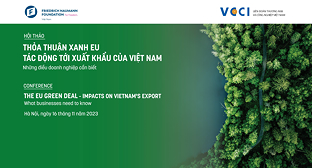Vietnam’s seafood sector maintains exports to key markets
06/01/2022 10:13

Vietnam’s seafood sector in 2021 was severely affected by the COVID-19 pandemic but, with the bold efforts of farmers, producers and relevant agencies, the sector still met its export target, especially in maintaining exports to key markets.
For aquaculture, the supply of juveniles, feed and medicine was disrupted; enterprises found it hard to purchase raw products due to social distancing measures while costs rose sharply due to higher costs of transport and coronavirus testing.
In addition, importing countries increased their requirements on quality, quarantine, fishing, processing, packaging, and customs procedures, including China and the US, which imposed a great number of non-tariff measures on Vietnamese seafood.
Furthermore, the measure of “three on-sites” was highly impractical to seafood processors. In August 2021, only about 30-40% of seafood companies in the southern region were operating while another 30-40% had to suspend their operations, especially in Tien Giang, Can Tho, Hau Giang and Dong Thap.
An estimate by VASEP, which represents seafood producers and exporters, showed that only 30-40% of seafood enterprises were capable of recovering in the post-distancing period at that time. As a result, seafood exports in August reached only 595.3 million USD, down 30.3% from the previous month and 26.9% year-on-year.
But growth picked up in the final two months of 2021, helping the sector’s full-year export revenue reach 8.89 billion USD, up 5.7% compared to 2020 and equivalent to 104.6% of the target. According to Tran Cong Thanh, Director of the Institute of Policy and Strategy for Agriculture and Rural Development (IPSARD), the seafood sector was able to maintain its exports and markets for the following reasons:
First of all, the government introduced many synchronous and prompt policies to address the difficulties facing enterprises such as prioritising vaccination for seafood workers and traders so as to stabilise the supply, processing and export chain. Notably Resolution 128 on adapting to COVID-19 in a safe and flexible manner has basically addressed many difficulties in the production and export of seafood companies.
Second is the effort and dynamism of enterprises in adapting to the new situation so as to not cause disruptions to the production chain. Factories strictly complied with the government’s regulations and guidelines and proactively formulated plans to live safely with the pandemic. Enterprise owners proactively proposed vaccinating seafood workers and allowing workers already inoculated with at least one dose to return to work, helping factories soon restore their production capacity.
Thirdly, the signed free trade agreements created many opportunities for Vietnamese seafood to increase its market shares in the US and the EU, particularly in Spain, France, Italy, Germany and the Netherlands, which are major seafood importers. The reopening of Vietnam’s main seafood importers and rising global demand for seafood, especially in the final months of 2021, enabled Vietnam’s seafood sector to accelerate and fulfil its full-year target.
According to IPSARD, Vietnam is taking advantage of tariff preferences effectively to enhance Vietnam’s competitiveness in major markets and look for new potential market. For markets such as the US, Japan and the Republic of Korea, the tariffs on Vietnamese seafood are at around 0-5.2%, while seafood from competitors India and China is subject to tariffs of 0-10.7% and 0-10.8%, respectively. Such figures show that Vietnam’s seafood has an edge over competitors in terms of tariffs in major markets of the world.
Source: NDO
Các tin khác
- Shrimp exports to major markets bounce back (22/04/2024)
- Vietnam becomes biggest rice supplier for Singapore (22/04/2024)
- Vietnam proposes removal of quota on shrimp export to RoK (22/04/2024)
- Early warnings reduce risks in trade defense (22/04/2024)
- Rubber exports are flourishing, promising potential (22/04/2024)
 Home
Home
 About Us
About Us




















